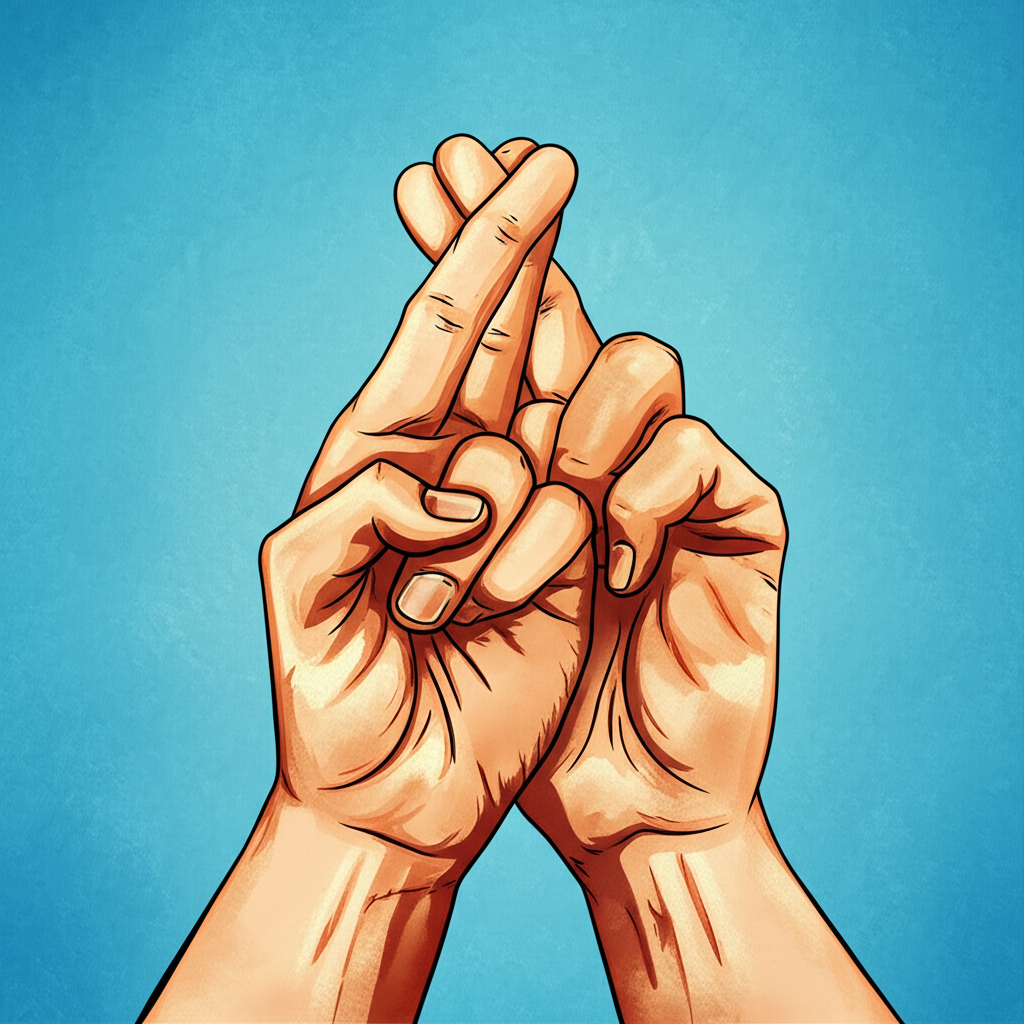
Crossing fingers for good luck is a common gesture, often performed unconsciously, reflecting a deep-seated belief in its efficacy. The phrase ‘fingers crossed’ is ubiquitous in everyday conversation, expressing hope for favorable outcomes in situations involving uncertainty, from minor daily events to major life aspirations. However, the documented history of this seemingly ancient practice is surprisingly recent.
While records of various good-luck customs exist from the 17th century onward, the specific act of crossing fingers for luck isn’t explicitly mentioned in print until the early 20th century. Interestingly, historical accounts suggest that crossing legs was a more prevalent tradition. In 1595, George Peele’s play The Old Wives’ Tale referenced the practice of sitting cross-legged and reciting prayers backward as a charm for good luck. Similarly, Francis Grose’s A Provincial Glossary of Popular Superstitions, published in 1787, noted that women would sit cross-legged to bring luck to their friends playing cards, and also pointed out that, ‘Sitting cross-legged, with the fingers interlaced, was anciently esteemed a magical posture.’
The transition from crossed legs to crossed fingers remains somewhat unclear. Some speculate that the interlaced fingers associated with women sitting cross-legged may have influenced the development of the modern finger-crossing gesture. Another theory posits a Christian origin, suggesting that crossing fingers evolved as a simplified version of the sign of the cross. Early Christians, facing persecution, may have used a subtle sign of the cross to identify themselves to one another. However, the absence of concrete evidence supporting this theory raises questions about its validity.
A more plausible explanation is that crossed fingers evolved as a symbolic abbreviation of making the full sign of the cross, which involves touching the forehead, chest, and each shoulder. From the 11th century, this gesture was used as a remedy for illness, and from at least the 7th century as protection against evil. In 1618, Puritan William Perkins described the “crossing of the body” as a practice employed to ward off the Devil. He condemned it as a form of enchantment, arguing that the cross was being used as a charm.
In contemporary society, the verbal expression “fingers crossed” often substitutes the physical act, although the visual image of crossed fingers remains a potent symbol, as evidenced by its use as the emblem of the National Lottery in the UK. Over time, finger-crossing has also acquired a secondary meaning: indicating insincerity. Crossing one’s fingers behind their back when telling a lie or making a promise they don’t intend to keep suggests that they don’t mean what they are saying. This may have originated as a way of invoking the protection of the cross to negate the sin of lying, providing a superstitious loophole for dishonesty.